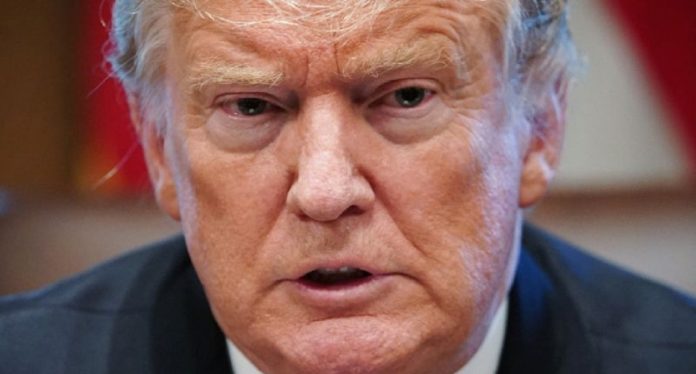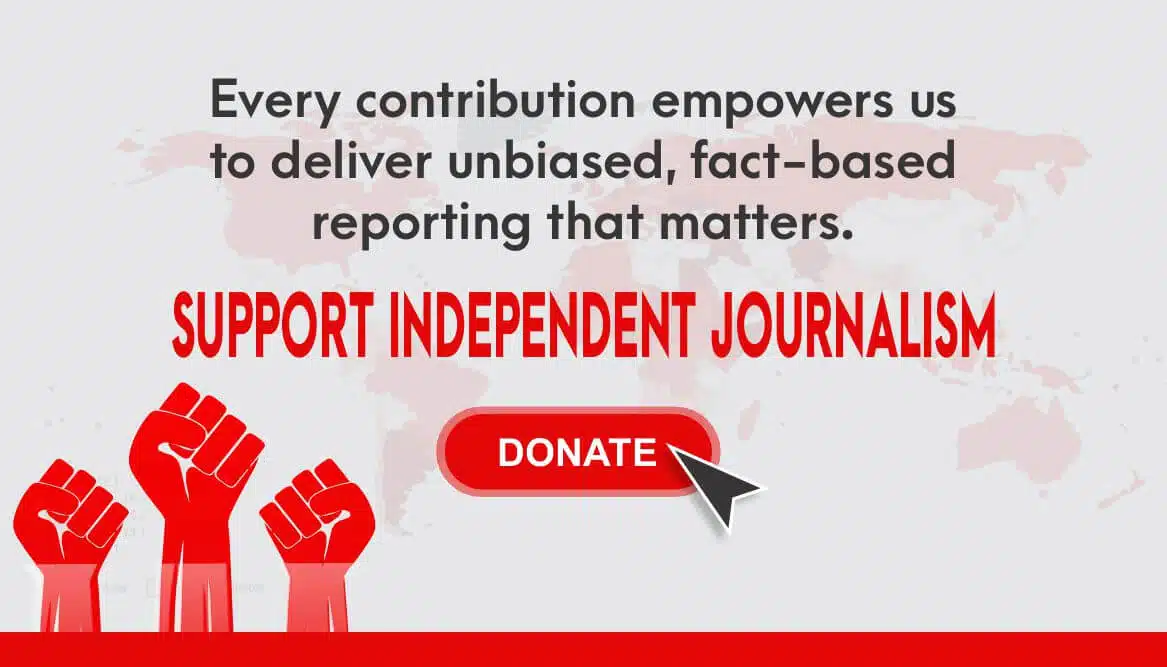“The pressing question facing American politics today is this: Have the dry bones genuinely come back to life? The answer appears to be a resounding yes, as these “dry bones” are epitomized by the resurgence of Donald Trump, who continues to play a pivotal role in shaping the nation’s political discourse. Despite his defeat in the 2020 presidential election and the numerous scandals that characterized his person and time in office, Trump has successfully entrenched himself as a powerful and influential figure within the Republican Party and the broader political landscape.”
The phrase “the dry bones have risen again” carries a profound meaning, often representing revival or resurgence, particularly related to ideas, movements, or nations once considered dormant, weakened, or nearly lost. This expression has its roots in the Book of Ezekiel, a significant text in the Hebrew Bible. In this scripture, the prophet Ezekiel has a powerful vision of a vast valley covered with dry bones, symbolizing a state of despair and hopelessness. Through a divine message, these skeletal remains are reanimated and clothed with flesh, breathing life back into what was once lifeless. This transformation symbolizes the Israelites’ revival after their exile, serving as a powerful metaphor for renewing their hope, identity, and strength. However, in modern discourse, the phrase “the dry bones have risen again” can be particularly apt when discussing the political landscape surrounding Donald Trump. After losing the highly contentious 2020 presidential election to Joe Biden, Trump’s political aspirations seemed to diminish, and many believed his influence was waning. However, in the 2024 election, Trump made a remarkable comeback. His resurgence is marked by renewed enthusiasm among his supporters and significant media attention, suggesting that his influence on the political stage may not be as diminished as previously thought. This revival reflects themes of endurance and resilience, paralleling the biblical imagery of dead bones returning to life. It highlights the dynamic nature of political fortunes in a rapidly changing landscape.
The 2024 United States presidential election has concluded, providing a clearer picture of who is the president-elect. In a notable departure from the 2020 election, which saw Joe Biden secure victory amid intense political polarization and unrest, this year’s election resulted in Donald Trump reclaiming the presidency. This significant shift can be attributed mainly to a profound change in voter sentiment in three critical Rustbelt states: Pennsylvania, Wisconsin, and Michigan. These states, pivotal in Biden’s 2020 victory, saw many voters pivot their support towards Trump this time. Many of these previously Biden-leaning voters cited many reasons for their shift, including lingering economic anxieties, dissatisfaction with the current administration’s handling of critical issues, and a desire for different leadership that could better address local and international concerns. In Pennsylvania, for instance, issues surrounding job creation and the revival of manufacturing industries were at the forefront of voters’ minds. Wisconsin voters expressed frustration over rising inflation and its impact on their day-to-day lives, prompting a reconsideration of their political affiliations. Meanwhile, in Michigan, the significance of traditional values and the effects of policy decisions on working-class families resonated strongly with many constituents, influencing their choice at the polls. These issues not only underscore the dynamic nature of voter preferences but also highlight the critical role that regional problems can play in shaping the national political landscape. Ultimately, these shifts culminated in a decisive victory for Trump, setting the stage for the future of American politics.
When Joe Biden made the historic decision to step aside and endorse Kamala Harris as the Democratic nominee, I noted a significant observation to my friends, the Jesuits, and professors before I left the United States in August. I contemplated the implications of this decision for the upcoming election and felt compelled to share my perspective on what I viewed as a crucial element of this political transition: I expressed my concern that in their enthusiasm to support Harris, the Democrats had inadvertently given the Republican Party a valuable advantage. In our discussions, many of my peers and academic mentors strongly disagreed with my perspective. They contended that Kamala Harris had the potential to emerge as a formidable challenger to Donald Trump. They drew parallels between her candidacy and that of Barack Obama, highlighting how he earned significant respect and admiration from a substantial portion of white voters nationwide despite the challenges posed by his racial background. This comparison was frequently referenced to bolster the argument that Harris, with her mixed-race heritage and unique life experiences, could effectively engage with and resonate among various racial and demographic groups across America. Also, my friends highlighted how Harris’s remarkable background—being the daughter of immigrants and having roots in both Indian and Jamaican cultures—provided her with a distinctive lens through which she could understand and articulate the experiences and concerns of various communities. They argued that her candidacy might not only offer a robust challenge to Trump but also resonate deeply with voters seeking a political voice that acknowledges and values their experiences, fostering a greater sense of inclusion and representation in the electorate. But why did I feel that the Democrats, in their genuine desire to support Harris, unintentionally provided the Republican Party with a significant strategic advantage?
For decades, many Americans have been unprepared to vote for a female president and have felt uncomfortable with the idea. This perspective is shaped by various factors that deserve deeper exploration. Firstly, we can trace the roots of this skepticism to long-standing societal norms and expectations that have historically positioned men as the standard bearers of leadership in politics and various sectors of society. Over the years, despite remarkable strides made toward gender equality, outdated attitudes and inherent biases continue to permeate public perception, influencing how female candidates are viewed. This is particularly evident in less progressive states, where traditional beliefs about gender roles remain more entrenched. In these regions, the idea of a woman occupying the highest office can clash with established cultural values, leading to resistance based on the belief that a leader should embody specific male characteristics associated with authority and decisiveness. Moreover, the unease surrounding female leaders can also stem from widespread concerns regarding the suitability of women for such a decisive role. Many Americans doubt women’s leadership capabilities, often fueled by stereotypes that question their strength in high-pressure decision-making environments. Several women have voiced their skepticism regarding the entrenched biases in leadership roles. They point out that when a woman ascends to a leadership position, she often encounters considerable obstacles from societal stereotypes and perceptions. These women feel compelled to navigate a challenging landscape, where they are frequently evaluated not only on their competencies but also in comparison to their male counterparts. Consequently, they must exert additional effort and display exceptional competence to convince others of their qualifications and capabilities. This dynamic can foster an environment where they must constantly demonstrate that they can perform at the same level as their male colleagues.
The second factor that deserves significant attention is the remarkable amount of influence women have had in America over the past few decades. This empowerment has led to a range of perspectives, with some expressing apprehension that women may leverage their newfound authority to dominate men in ways that could be perceived as harmful or unjust. In contemporary America, there has been a marked increase in the frequency and visibility of accusations about sexual exploitation, rape, and various forms of abuse. This surge reflects a profound transformation in our cultural landscape, where discussions around these serious issues are now more vocal and widespread. Unlike previous decades, when many cases were frequently silenced, overlooked, or outright dismissed, today’s environment encourages an open dialogue and a greater willingness to confront these injustices. The shift signifies not only a change in public perception but also highlights the importance of advocacy, awareness, and support for survivors, paving the way for a more compassionate and understanding society. The increase in reports of abuse against women indicates that the dynamics of power in interpersonal relationships are being scrutinized more closely. This scrutiny highlights a complex interplay of gender dynamics alongside evolving societal norms and expectations. As a result, there is skepticism among Americans regarding the potential rise in misconduct accusations if a woman were to assume the presidency, with worries that women might take advantage of such situations for their gain.
We cannot overlook the lessons of history so easily. In 2016, the same underlying factors revealed a complex tapestry of cultural and systemic barriers that ultimately hindered Hillary Clinton’s presidential bid against Donald Trump. Despite her extensive political experience, impressive credentials, and broad support base, Clinton confronted deeply entrenched societal biases that permeated the political landscape. These biases manifested in various ways, primarily through the double standards applied to women in leadership roles. For example, her scrutiny was often far harsher than that faced by her male counterparts, with critiques frequently centering on her personality, appearance, and emotional responses rather than her policies and capabilities. Similarly, the pervasive skepticism surrounding women’s leadership skills created an environment where Americans questioned Clinton’s qualifications. Despite her impressive resume, which included roles as a senator, secretary of state, and first lady, her campaign was plagued by persistent criticisms and doubts. The consequences of these challenges extended beyond Clinton’s candidacy. Harris, too, encountered a political environment fraught with similar obstacles. External factors such as gender bias, abortion law, and societal expectations shaped her campaign strategies, public perception, and the media narrative. The issue of abortion did not significantly influence young women’s support for Harris. Despite the national discourse on reproductive rights, other factors—including economic concerns, social justice, and general policy positions—played a more pivotal role in shaping their political preferences. This shows that young women are starting to prioritize broader issues over abortion rights when evaluating their support for political candidates.
In one of my policy classes in the United States, I undertook an extensive research paper on gender representation and political participation. Through the research, I found that the female population in the US not only surpasses the male population but also plays a crucial role in shaping electoral outcomes. Delving deeper into immigration statistics, I found compelling evidence indicating that women migrate slightly more than men, further contributing to their increasing numbers in the electorate. This demographic insight raises essential implications, as it suggests that the number of female voters will likely exceed that of their male counterparts. Given this context, one might expect strong solidarity among women in supporting Harris. Yet, the gender gap in support for the candidates was marginally less pronounced for Kamala Harris when compared to Donald Trump, indicating that Harris garnered a slightly higher level of backing from female voters relative to the support Trump received. The notion that Latino and African American women uniformly support Kamala Harris is only partially accurate, especially in the context of the current election. Many women, including those from Latino and African American communities, harbor concerns regarding the electability of a female candidate competing against a male opponent. While I was heartened by the support Harris received from some women, it ultimately fell short of securing her victory. Additionally, I was taken aback to discover that, despite allegations of misconduct against him, a significant number of women still voiced their support for Trump during this election. This trend invites thought-provoking questions about the complexities of women’s political affiliations. It prompts me to consider: Do American women genuinely support one another in the political arena? Can they unite to uplift and empower each other during critical times, particularly in a landscape still characterized by gender disparities in representation?
Voting patterns influenced by gender were notably evident during the 2024 US election. While Donald Trump succeeded in crucial states such as Arizona, Michigan, and Wisconsin, Democrats secured Senate seats in those regions, revealing a complex political landscape. This raises questions about why Harris faced challenges in these states, even as her Democratic colleagues triumphed in Senate races. The inability of Harris to secure victories in Arizona, Michigan, and Wisconsin, contrasted with the success of her Senate counterparts, suggests that the electorate may still be hesitant to elect a woman as president. This phenomenon implies that, despite an increasing acceptance of women in leadership roles, female presidential candidates encounter significant hurdles in winning over a diverse electorate with a wide range of—and often conflicting—views on gender. These complex attitudes not only underscore the obstacles women face in politics but also resonate with the ongoing discourse surrounding gender, feminism, and equality that continues to shape American society. These cultural divisions show that the path to acceptance and support for women in America differs significantly across the political spectrum.
Will America ever elect a female president? The question of whether America will elect a female president in the near future is not just a matter of possibility but rather a question of timing. Several factors indicate that this possibility is becoming more attainable. Here is my analysis of the likelihood based on current trends, evolving demographics, and the political landscape: The United States has experienced a consistent increase in the number of women elected to Congress, gubernatorial offices, and state legislatures. Trailblazers such as Kamala Harris, the first female Vice President, and influential figures like Elizabeth Warren, Nikki Haley, and Stacey Abrams have demonstrated to voters that women can hold high office. This heightened visibility plays a crucial role in dismantling biases and normalizing the presence of women in top leadership positions. With more women entering and succeeding in politics, we are cultivating a wider pool of experienced candidates who could run for president and be considered viable contenders.
Younger generations exhibit more significant support for gender equality and prioritize policies over personal attributes such as gender. In particular, Millennials and Gen Z voters are less likely to perceive gender as a barrier to leadership and display a heightened openness toward female candidates compared to older generations. As these younger voters represent an increasing electorate share, the prospect of a female president becomes more attainable. These generational shifts progressively dismantle longstanding stereotypes surrounding female leadership, making it increasingly probable that a woman could secure the presidency within the subsequent few election cycles. Surveys indicate that most Americans are receptive to a female president. In fact, many voters from both political parties express their support for this concept. However, their ultimate choice of candidate may depend on other factors, such as policy positions and experience. There is a growing desire for change and increased diversity in leadership. Vice President Kamala Harris’s historic participation in the recent election underscores that many Americans are prepared and enthusiastic about the possibility of female leadership at the highest levels.
Prominent women from both major political parties have demonstrated presidential potential and possess the ability to attract a diverse range of voters. Within the Democratic Party, Kamala Harris stands out as a likely contender, alongside senators like Elizabeth Warren and governors like Gretchen Whitmer. On the Republican side, candidates like Nikki Haley and Kristi Noem could mount strong campaigns with the potential to garner support from both conservative and moderate voters. The success of a female candidate will hinge on her capacity to build a broad coalition, and these individuals appear well-equipped to do so, given their political records, leadership experience, and national profiles. Recent political and social movements have generated significant momentum for diversity and inclusion in leadership roles. Initiatives such as Black Lives Matter, along with heightened advocacy for gender and racial equality, have reshaped American perspectives on leadership and representation. This cultural push for inclusivity is increasingly influencing electoral decisions. In response to these shifts, political parties may begin prioritizing diverse candidates for leadership positions. For instance, some strategists within both the Democratic and Republican parties view female candidates as advantageous, especially among voters who are seeking fresh perspectives and leaders that reflect the nation’s diversity.
Kamala Harris’s role as Vice President is significant, as she is strategically poised for a potential future presidential campaign. Her performance in office could significantly shape voter perceptions of women in executive leadership, influencing public opinion either positively or negatively. A strong track record could enhance Americans’ comfort with the idea of a female leader, potentially paving the way for her or other female candidates in the future. Therefore, the possibility of a female president in the future is stronger than ever, fueled by generational shifts, evolving social attitudes, and a growing pool of qualified female candidates. Although no single factor can assure a woman in the Oval Office, the intersection of these elements presents a realistic opportunity. America is gradually surmounting biases that have historically hindered female leadership. The prospect of a female president within the next decade appears highly plausible as the political landscape evolves.
The pressing question facing American politics today is this: Have the dry bones genuinely come back to life? The answer appears to be a resounding yes, as these “dry bones” are epitomized by the resurgence of Donald Trump, who continues to play a pivotal role in shaping the nation’s political discourse. Despite his defeat in the 2020 presidential election and the numerous scandals that characterized his person and time in office, Trump has successfully entrenched himself as a powerful and influential figure within the Republican Party and the broader political landscape. Several key factors contribute to his surprising comeback. Foremost among these is the unwavering loyalty of his supporters, who passionately defend him, his policies, and scandals. This loyalty is further reinforced by Trump’s skill in dominating media narratives and utilizing social media platforms to communicate directly with his audience, thus circumventing traditional media channels that may offer criticism. Moreover, the political landscape has shifted in ways that align with his brand of Trumpism. Factors such as economic challenges, cultural conflicts, and evolving demographics have fostered an environment where his message resonates with numerous voters disenchanted by the establishment. Furthermore, Trump’s strategic political maneuvers—including his rhetoric, attacks, and insults directed at candidates who oppose his agenda—have solidified his influence among his supporters. These factors indicate that instead of receding into the background, Trump has not only reemerged but has also rejuvenated his presence in American politics, with repercussions that will resonate for years to come.
–
Rev. Ma, S. J., is a Jesuit Catholic priest of the North West Africa Province of the Society of Jesus. He currently writes from the Kukah Center in Abuja, Nigeria.







